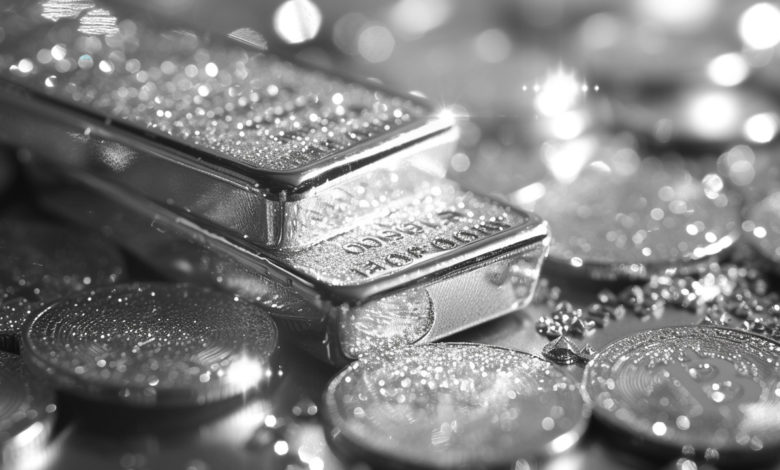All That Glitters: The When, Why, and How of Platinum Investing

While it doesn’t approach having the same wealth-protecting power of gold or silver, platinum is a precious metal that just never quite gets the love it deserves. Practically speaking, other than jewelry, platinum is best known as a crucial element for catalytic converters for cars. But it’s also used in manufacturing everything from jet engines and missiles to semiconductors and fertilizers.
This makes it a commodity with a very real use case as a store of wealth — with a much rarer supply than gold (about 30 to 1) and constant industrial demand. As an inflation hedge it has its place in a diversified metals portfolio and when the timing is right, it can even make for profitable speculation. For example, if you bought the 2008 bottom of about $787 per troy ounce, you could have sold in 2011 for an impressive $1,884. While that’s an extreme example (unlike gold, platinum crashed during the 2008 crisis), a price chart of more recent years still shows opportunity.

Industrial demand for platinum is currently hitting new records, and the World Platinum Investment Council (WPIC)’s outlook for 2024 is for that trend to continue this year as relative supply remains in a deficit:
“In 2024, despite global economic growth that is expected to be slower than 2023, at 3% based on the most recent IMF forecast, we expect the platinum market to remain in a deficit of 353 koz.”
Because of how reliant the demand of platinum is on jewelry and industrial applications, desire for the metal tends to wane during recessions. But it has secured itself an important role in the manufacturing of more products and technologies than most people realize. For example, while catalytic converters are still one of its most important industrial uses, electric vehicles rely on platinum as well.
In fact, platinum is being used in the development of a lot of “green energy” technologies, which sometimes have the added investment benefit of being subsidized by governments. Platinum’s usefulness in this sector has even led to concerns, expressed by groups like the International Energy Forum (IEF), that limited global platinum supply could even challenge the global transition to renewable energy sources. As the IEF notes, governments around the world are approving numerous measures that subsidize clean hydrogen and EV fuel cells, both of which require platinum:
“In the US, for instance, the Inflation Reduction Act aims to accelerate clean hydrogen production and fuel cell EV adoption and includes a generous tax incentive for low-carbon hydrogen.”
The WPIC thinks that by 2040, these technologies could account for 35% of worldwide platinum demand. While some other sources of industrial demand could wane in the meantime, the tendency of governments to all try to outdo each other in who can support the most “green tech” makes it easy to see real medium to longer-term potential for platinum as a result. Demand could easily outpace supply depending on which developments become winners in the race for renewables. Meanwhile, new environmental standards, like changing emissions requirements for vehicles and renewable energy minimums, will continue to evolve the platinum demand going forward.
Platinum investors are also always watching the COMEX, a global derivatives market for commodities, for signs. January, April, July, and October are major months to watch for platinum, with lots of end-of-quarter open interest that goes down again as first position approaches.
First position is when contracts need to roll (meaning investors take the profit/loss and roll the contract to a future month), or stand for delivery (take physical ownership of the metal). Depending on factors like current supply, industrial demand, and how many futures contracts will settle, investors can make a nice profit if they understand COMEX supply dynamics and their timing is right.
In one example from 2022, someone may have done just that when an anomaly in the platinum futures market indicated that an investor may have taken advantage of limited supply, appearing to play a game of chicken with COMEX by threatening to take physical delivery of platinum that they knew didn’t actually exist in COMEX’s vaults:
“A single trader (or perhaps a small group of traders), took on a little risk by playing their hand like they would take delivery. This forced the COMEX into paying a huge premium to NOT have to deliver the metal it DOESN’T have!”
While this degree of sophistication might be far beyond the average investor, events like this highlight the relative scarcity of platinum compared to gold and silver. There’s a potential scenario where this market could be cornered if substantial buying occurs. This coupled with the COMEX failing to meet delivery obligations, could lead to a substantial surge in platinum prices.
Important note:
This article references an opinion and is for information purposes only. It is not intended to be investment advice.
Call 1-888-GOLD-160 and speak with a Precious Metals Specialist today!
Buka akaun dagangan patuh syariah anda di Weltrade.
Source link






